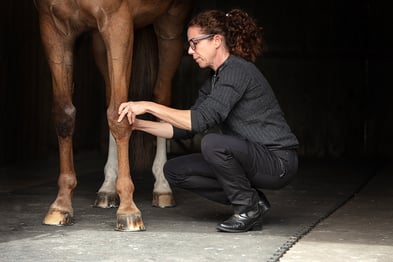Sleip renews sponsorship for EGAS Live Course in 2026
Sleip will continue its sponsorship of the EGAS Live Course 2026 — marking our 4 year supporting advanced post-graduate education in quantitative gait analysis for equine veterinarians.

A new study co-authored by Sleip’s Chief Medical Officer Elin Hernlund has been published in Preventive Veterinary Medicine, analysing insurance claims from more than 15,000 Swedish Warmblood horses born between 2010 and 2020.
Sweden has a long-standing tradition of insuring horses for veterinary care, with orthopaedic diagnoses representing the most common cause of claims. Using data from insurance provider Agria and pedigree classifications, the study examined how factors such as discipline (jumping vs dressage), sex, participation in young horse performance tests, and competition history relate to the risk and timing of orthopaedic diagnoses.
Key findings include:
Dr. Elin Hernlund comments:
"These findings give us a broader picture of soundness and injury risk in the sport horse population. Understanding when and where problems arise can support earlier interventions and inform better management over the horse’s career."
The study reinforces the value of population-level data for tracking welfare trends and risk profiles—and highlights the need for continued focus on prevention.
“We often focus on treating lameness once it’s visible, but tools like gait analysis and data-driven research can help us ask earlier, better questions, says Elin Hernlund”
Read the full study here.

Sleip will continue its sponsorship of the EGAS Live Course 2026 — marking our 4 year supporting advanced post-graduate education in quantitative gait analysis for equine veterinarians.

SLU, Sleip, and a number of private equine clinics have collaborated on a study showing how anatomical size-scaling helps align objective gait data with visual lameness assessments

This summer we conducted a survey about equine lameness for more than 100 equine veterinarians from the ISELP community.